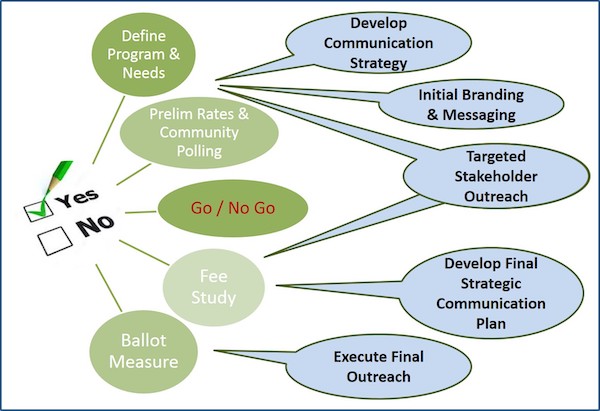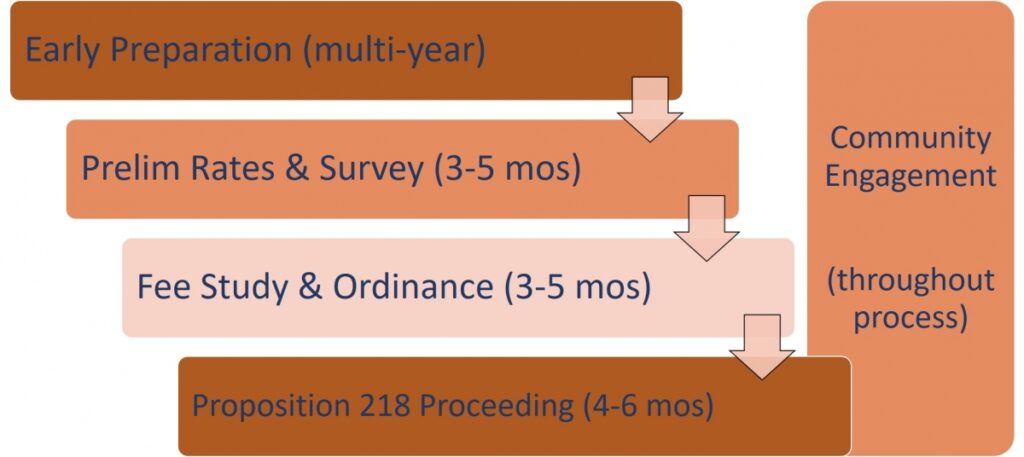Creating a Stormwater Utility
Stormwater management services are an important component of modern cities, similar to water or sewer system utilities. Stormwater utility operations include services to property owners (collecting, conveying, and managing stormwater runoff from properties) and the infrastructure and management systems to deliver those services. A utility approach also implies identifiable costs and corresponding revenues (user fees), which can be restricted to those services and costs to create a self-supporting fiscal enterprise.
A primary barrier in creating a stormwater utility (more commonly known as an “enterprise fund” in California) is the required voter approval for local fees and taxes in California pursuant to Proposition 218. A secondary barrier in developing a stormwater utility with dedicated funding (not just in California, but across the nation) is the historic view of stormwater management as a secondary function – often managed as part of the road system – for which no dedicated funding source has been needed – usually subservient to the streets and roads under which the pipes lie. Together, these two barriers mean that sustainable utility programs for stormwater take planning to meet challenges.
Stormwater utility fees are defined under Proposition 218 as property-related fees similar to user fees for water, sewer and trash collection services. However, stormwater fees were not granted an exemption from voter approval, and therefore must be submitted to voters through a ballot proceeding (similar to an election but done through the mail with voters comprised of property owners rather than registered voters). Although Senate Bill 231 clarified how municipalities can adopt or increase stormwater utility fees, this new law has not been tested by the courts and remains contentious (see SB 231 summary).
Stormwater fees successfully implemented under Proposition 218 procedures become restricted fees, which must be kept separate from other municipal revenues and can only be used for stormwater services. In other words, it would become an enterprise fund, or an internal utility. The steps recommended in establishing a stormwater utility are described on the following pages:
Master planning, strategic planning, financial planning, capital improvement planning, asset management planning, operational planning.
Stakeholder input during development of fees structure and community education throughout the process.
Determining revenue needs and apportioning costs fairly; public opinion survey testing priorities and willingness to pay.
Based on program needs, community priorities, and other administrative elements.
A 4 to 6 month process that includes a mailed notice, a public hearing, and a mailed ballot.
Guidance Graphics
The diagram below illustrates the process. The green bubbles show the basic elements of the process, and the blue bubbles show how an optimum community engagement process would be woven into the basic process at every step from beginning to end.

The timeline for the full process of enacting a voter-approved stormwater utility fee will normally take at least eight to 12 months depending on the pace of the work and the extent of the community outreach. This assumes that the “Early Preparation” portion is already completed. The graphic below illustrates the elements and time frames to be expected.

Survey of Existing Stormwater Fees in California
Several municipalities in California have adopted stormwater fees over the years. We have provided a list of those known fees, sorted by county.
Many resources already exist that provide an overview of and details for creating a stormwater utility in California:

